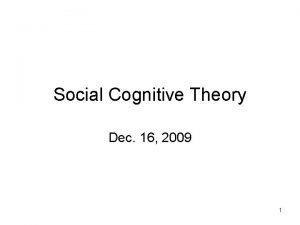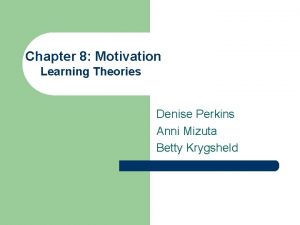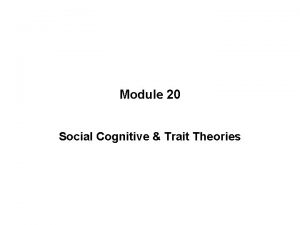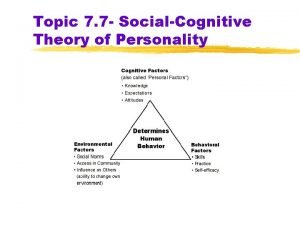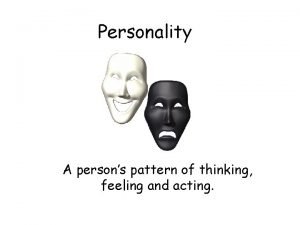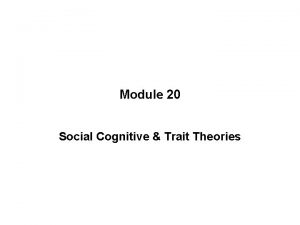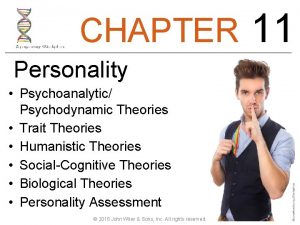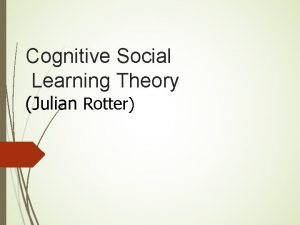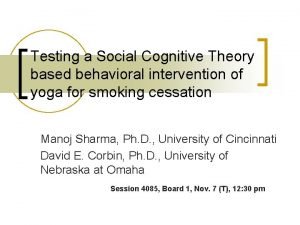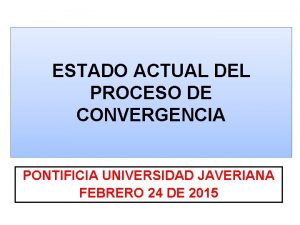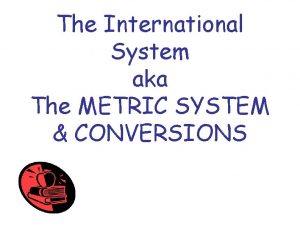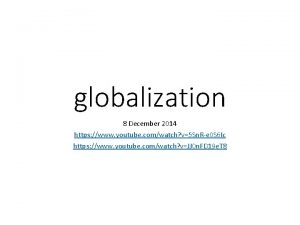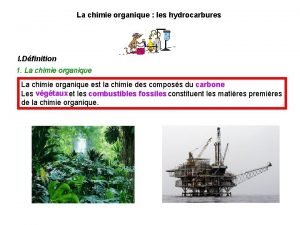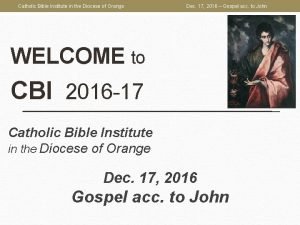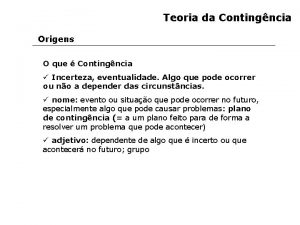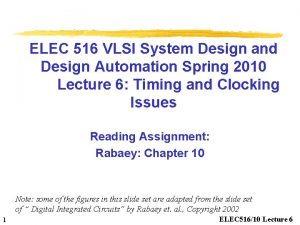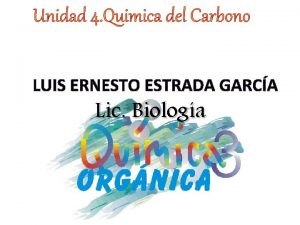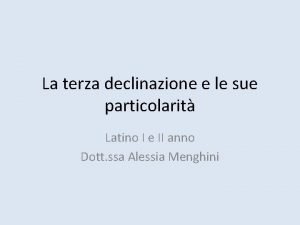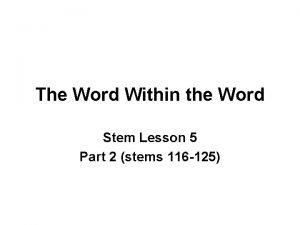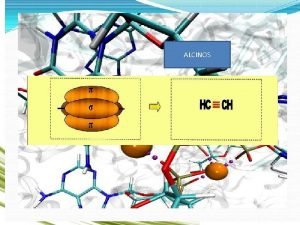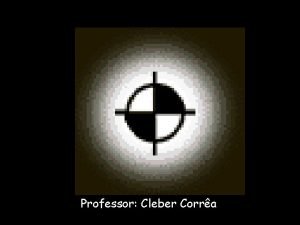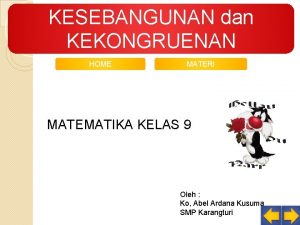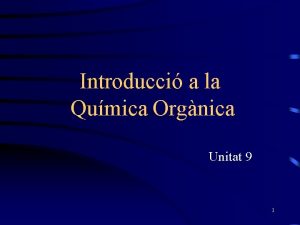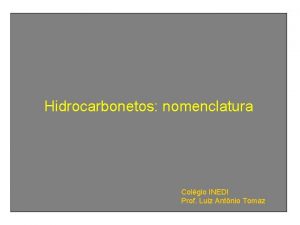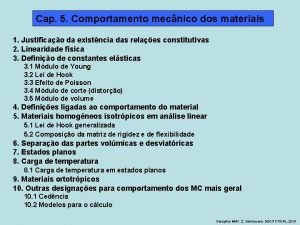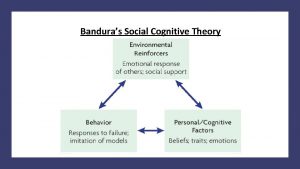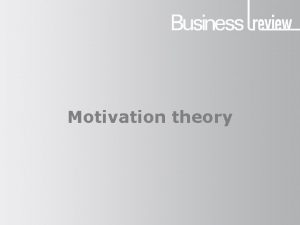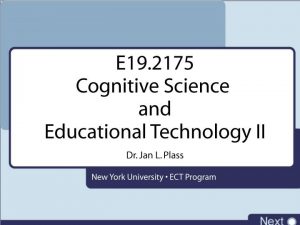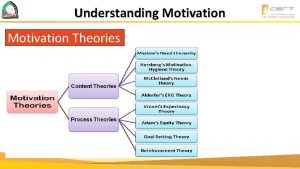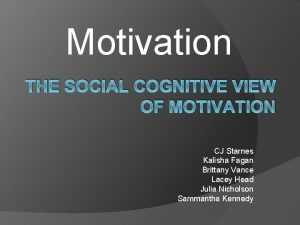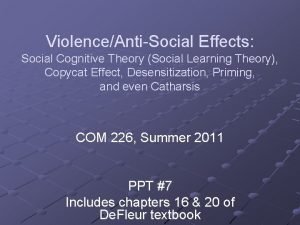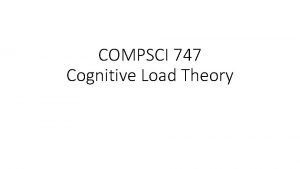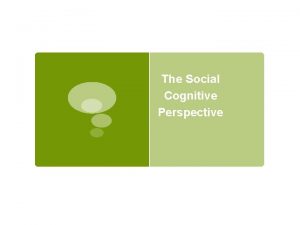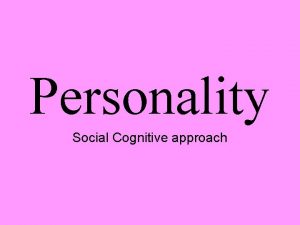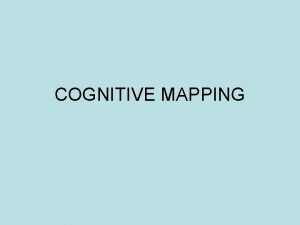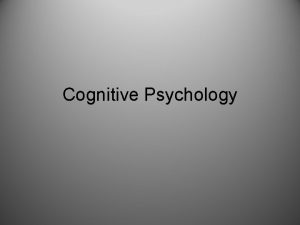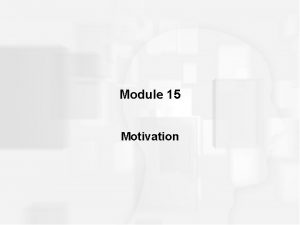Social Cognitive Theory Dec 16 2009 1 Motivation


































- Slides: 34

Social Cognitive Theory Dec. 16, 2009 1

• Motivation theorists refer to cognitions (thoughts, beliefs, self-perceptions, expectations) to understand influence behavior. • We will talk about theories in which the effects of reinforcement are assumed to be at least partly mediated by thoughts. 2

• Recognized the – powerful effects of reinforcement and punishment on individual's behavior, – objected to the notion that individuals are entirely regulated by external forces. That is, individuals are passive respondents to environmental contingencies. 3

• Bandura developed a social cognitive theory. – Cognitions are assumed to mediate the effects of the environment on human behavior. – According to Bandura, whether individuals expect to be reinforced for a behavior is more important than whether they have previously been reinforced for it. 4

Bandura • Reinforcement history does not have a direct effect on individuals’ cognition. • Rather it is filtered through personal memory, interpretations, and biases. • Social cognitive theorists portray individuals as actively processing events and developing expectations regarding reinforcement. 5

• Studies show that – When people are not aware of the contingencies of reinforcement, their behavior is not effected by it (Dulany, 1968). – If individuals are led to believe that previously reinforced behavior will not be reinforced in the future, they will not engage in the behavior (Estes, 1972). 6

• Beliefs about future reinforcement appear to be more important determinants of behavior than actual reinforcement histories. 7

• Social cognitive theorists assume that personal experience with reinforcement and punishment are not required for behaviors to be manifested. • This assumption solves the problems that behaviorists have difficulty in explaining. • According to behaviorists, individual’s behavior is determined by their own reinforcement history. 8

Enactive and vicarious learning • Enactive learning: learning by doing and experiencing the consequences of your actions • Consequences build up expectations, influence motivation, and shape beliefs. – Inquiry learning – Problem-based learning cognitive apprenticeship 9

Observational learning (vicarious learning) • Operant conditioning theorists rely on the principle of shaping to explain how children learn new behaviors (behaviors that not have been reinforced previously). • Bandura and Walters proposed that individuals exhibit behaviors that have not been previously reinforced as the result of observing another individual being reinforced for the beavior (vicarious learning) 10

vicarious learning • Bandura distinguishes between the acquisition of knowledge and the observable performance based that knowledge • Classic study by Bandura (1965). – – Three versions of a 5 -minute movie Rewarded by an adult Punished by an adult No adult reaction • Not all children were equally capable of reproducing the aggressive behavior that they had learned. They differed in the degree to which they actually manifested. 11

• Not all demonstrate aggressive behaviors • Personal consequences may discourage the person performing the behavior. 12

vicarious learning-modeling • Distinction between acquiring a behavior and manifesting a behavior in action (between learning and performance) is made by social cognitive theorists. • Principles of vicarious learning is used in early elementary school classrooms (…. I like the way Ahmet works on his assignment right now: Table 5 is quite and may go to recess). 13

Learning by observing others (Vicarious learning) • Attention (model who is active, colorful or like you) • Retention (retain, remember) • Reproduction • Motivation (motivated to imitate) • Vicarious reinforcement—selfreinforcement • Many times punishment will not work (vicarious reinforcement) 14

Factors that affect observational learning • Developmental status (as children grow older, they are more able to pay attention…. ) • Model prestige and competence (status of the model depends on the age and interest of the person) • Vicarious consequences • Outcome expectations • Goal setting • Self-efficacy (if observers have high-level of efficacy) 15

• Bandura stresses the importance of personal evaluation and self-satisfaction as positive reinforcement. • He claims that most people value the selfrespect and self-satisfaction derived from a job well done more highly than material rewards. Thus, achieving a personal goal or meeting a personal achievement standard and the accompanying self-satisfaction, can serve as reinforcement. 16

• Goals or intentions play a central role in theory. • One way to influence children’s behaviors is to influence their goals. • When individuals commit themselves to a goal, discrepancies between what they do and what they intended to do create selfdissatisfaction that serves as an incentive for enhanced effort. 17

• According to Bandura, the capacity to use symbols (language), provides humans with a powerful tool for dealing with their environment and a means of controlling their behavior. • Environmental influences have lasting effects on behavior because they are processed and transformed into symbols. 18

• These cognitive representations of behavior and its consequences serve as a guide for future behavior. (e. g. , teacher dismisses the quiet table first…. . ). • The cognitive capacity for symbolic representation and forethought (goals and expectations) also allows people to sustain efforts over along period of time. • Students can continue to show effort without regular reinforcement (by keeping goal in mind) 19

• Representational abilities allow human beings to have more control over their own behavior than is assumed by strict reinforcement theorists. • Human beings exercise self-control by arranging the environment in a way that produces the behavior they desire (e. g. , setting an alarm clock to wake up at a particular time). 20

• Individuals shape their own experiences including the frequency and nature of reinforcements in academic context by choosing which courses to take, or which ways to complete an assignment. 21

Observational learning in teaching • Directing attention • Fine-tuning already-learned behaviors (proper use of fork, when to leave gathering, etc… ) • Strengthening or weakening inhibitions (if the model is well-liked, the effect of the model will be more pronounced---ripple effect) • Teaching new behaviors (thinking out loud to teach critical thinking skills) • Arousing emotions (hearing and reading) 22

Self-efficacy • Self-efficacy: beliefs about our personal competence or effectiveness based on past experiences and our observations of others – Judgment in a particular area • Self-efficacy and attributions affect each other. If success is attributable to internal or controllable causes (ability, effort), then self-efficacy is enhanced. 23

Reciprocal determinism • Behavior affects the environment, environment affects the behavior • A student who is late, and hostile communication…. 24

Cognitive Behavior Modifications (CBM) • Most CBM researchers are reinforcement theorists in a sense that they believe that ultimately behavior is determined by its consequences (reinforcement, punishment). • However, they also believe that – cognitive processes mediate the influence of the external environment on behavior , – individuals can manipulate the stimulus conditions which influence their own behavior. • Thus, individuals can arrange the environment to maximize the chance that desired responses will occur. 25

Cognitive Behavior Modification (CBM) • Cognitive Behavior Modification (CBM) involves students in regulating their own behavior. • It is similar to reinforcement theory because it assumes that reinforcement principles are operating. • It is different because the treatment involves modifying a person’s cognitive operations in order to achieve a change in his/her behavior. . 26

• CBM requires children to take more responsibility, either by monitoring their own behavior, setting their own goals and standards, or administering their won rewards. • Personal involvement is believed to have a number of advantages over external monitoring and reinforcement. 27

• Students will better understand the relationship between environmental events and behavior if they develop strategies for monitoring and controlling their own behavior, rather than relying on teachers who maintain all they control. • When rewords and punishment are always administered by an external agent, the agent may become a discriminative stimulus (a necessary cue for the performance of the desired behavior). • Therefore classroom discipline can break down at the moment the teacher steps out. 28

Self-recording • Have the students keep the students a record of the behavior. • Self-recording itself has been found to influence behavior, even without tangible reinforcement. • Children may be asked to record the – – duration of an activity, Frequency of a particular behavior task completion, or the level of performance • E. g. , How long they read at home each evening, etc…. • Children’s competencies should be considered 29

• Self-recording can be done in many ways. • Have the students make a mark on a sheet of paper every time they engage in a behavior (bring back a completed assignment) – Graphs, tallies next to the picture , tape the graph on student's desk) – Students must be trained – They need a clear and simple definitions of the target behavior – Demonstration of the self-monitoring procedure – Personal responsibility – Personal goal setting – Can be effective for only students who are genuinely desire to change behavior. 30

Self-reinforcement • Involve students in selecting and administering their own reinforcement • According to social cognitive theorists, self -reinforcement increases performance mainly through its motivational function. • E. g. , promising oneself a chocolate chip cookie for finishing some predetermined amount of work, or vacation for not smoking for a specified length of time. 31

• When children were told to verbalize pride in their work, they persisted longer on a task than when they were told to utter neutral statements (Masters & Santrock, 1976) • A practice common in elementary schools is to give children opportunities to engage in desired activities (e. g. , when they finished their assigned work, playing a puzzle or game, etc) 32

• Research also suggests that publicly stated standards are more effective than private ones (Hayes et al. , 1985). • Unearned points could be problems…. That's why some monitoring is requiered 33

Self-instruction • Meichenbaum (1977) suggests that speech can be used to regulate one’s behavior or to solve problems. • Children with LD lack two kinds of skills: – Metacognitive skills – Self-regulations skill 34
 Social cognitive theory motivation
Social cognitive theory motivation Eccles expectancy value theory
Eccles expectancy value theory Trait theory vs social cognitive theory
Trait theory vs social cognitive theory Social cognitive personality
Social cognitive personality Barnum effect
Barnum effect Andrea reger
Andrea reger Freud's five stages of psychosexual development
Freud's five stages of psychosexual development Basic prediction formula rotter
Basic prediction formula rotter Social cognitive intervention
Social cognitive intervention Cognitive and non cognitive religious language
Cognitive and non cognitive religious language Motivation in group formation
Motivation in group formation Tri quad pent hex
Tri quad pent hex Pref et dec
Pref et dec Dec. 3022/13
Dec. 3022/13 Metric system capacity
Metric system capacity Nys dec decals
Nys dec decals 8th dec 2014
8th dec 2014 Ra dec
Ra dec Prop but pent
Prop but pent Dec 17
Dec 17 Modelo de lawler
Modelo de lawler Elec
Elec Importancia de grupos funcionales
Importancia de grupos funcionales Méth eth prop but pent
Méth eth prop but pent What is chemistry
What is chemistry Nomi della terza declinazione primo gruppo
Nomi della terza declinazione primo gruppo Jlh mesure
Jlh mesure Meth eth prop
Meth eth prop Helio stem meaning
Helio stem meaning Forneça a nomenclatura correta para os seguintes alcinos
Forneça a nomenclatura correta para os seguintes alcinos Propil
Propil Materi kekongruenan dan kesebangunan kelas 9
Materi kekongruenan dan kesebangunan kelas 9 Met et prop but pent hex hept oct non dec
Met et prop but pent hex hept oct non dec Met et prop but pent hex hept oct non dec
Met et prop but pent hex hept oct non dec Dec fct unl
Dec fct unl
